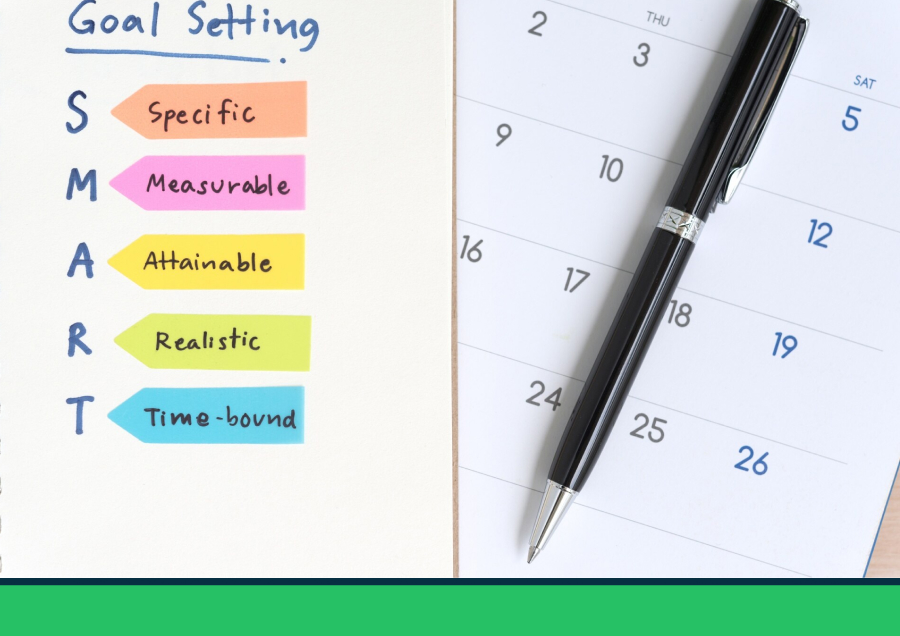As you strive for success in your personal and professional life, have you ever wondered how to set and achieve goals? Goal setting is a powerful tool that helps individuals like you clarify their objectives, prioritize efforts, and boost productivity. For instance, studies show that individuals who set specific goals are 10 times more likely to achieve them than those who don’t.
The importance of goal setting is that It helps individuals prioritize efforts, overcome obstacles, and achieve desired outcomes. By setting goals, you can improve self-discipline, increase productivity, and experience a sense of accomplishment, leading to greater fulfillment and success.
The benefits of effective goal setting are numerous, including enhanced focus and motivation, improved time management, and greater self-confidence and personal satisfaction. By setting clear goals, you’ll experience a sense of direction, increased energy, and a stronger commitment to achieving your aspirations.
So, what makes a goal successful? The answer lies in setting SMART goals. SMART is an acronym that stands for:
- Specific: Clearly define what you want to achieve.
- Measurable: Quantify your goal to track progress.
- Achievable: Ensure your goal is realistic and attainable.
- Relevant: Align your goal with your values and needs.
- Time-bound: Set a specific deadline or timeframe.
By incorporating these SMART criteria into your goal-setting process, you’ll be well on your way to achieving success and realizing your full potential.

Part 1: Goal Setting for Personal Needs
Improving your life starts with setting personal goals, such as enhancing relationships, advancing your career, or achieving better health. To succeed, you’ll need to identify your goal type, follow effective steps, utilize suitable tools and techniques, and overcome challenges, all of which are crucial elements to master when learning how to set goals in life, and will be explored in detail to guide you towards achieving your aspirations.
1. Understanding Personal Goals
As you embark on your goal-setting journey, it’s essential to understand the various types of personal goals that can enhance your life. Consider adopting goals that align with your aspirations, such as improving your career, nurturing relationships, or achieving physical well-being. The types of personal goals you can consider adopting are short-term vs. long-term goals, personal development goals, health and wellness goals, financial goals, relationship goals, and more, which will guide you on how to set goals and achieve them.
When setting personal goals, you’ll encounter short-term and long-term objectives. Short-term goals, like learning a new skill or saving for a vacation, can be achieved within a year, while long-term goals, such as career advancement or retirement planning, require sustained effort.
Personal development goals focus on self-improvement and enhancing your mindset, skills, or character. You may aim to develop emotional intelligence, learn a new language, or build confidence.
Health and wellness goals prioritize your physical and mental well-being, including regular exercise, healthy eating, stress management, and getting enough sleep.
Financial goals help you manage your resources, such as saving, investing, debt reduction, or increasing income.
Relationship goals nurture your connections, strengthen family bonds, build meaningful friendships, or improve communication skills.
By understanding these goal types, you’ll be better equipped to set and achieve personalized objectives, mastering to set goals and achieve them.
2. Steps to Effective Personal Goal Setting
Mastering how to set goals in life requires a strategic approach. By following a structured process, you’ll set yourself up for success. The steps to effective personal goal setting are engaging in self-assessment, identifying strengths and weaknesses, recognizing personal values and interests, creating a personal action plan, breaking down goals into actionable steps, setting deadlines and milestones, and more.
Begin by engaging in self-assessment, identifying your strengths and weaknesses. Acknowledge areas where you excel and those needing improvement. Recognize your values and interests, aligning them with your goals. This introspection helps you set realistic and meaningful objectives.
Next, create a personal action plan. Break down large goals into smaller, manageable tasks. Set specific deadlines and milestones, track progress, and celebrate achievements. This structured approach ensures steady momentum toward your goals, guiding you in achieving success.
3. Tools and Techniques for Personal Goal Setting
Mastering how to set goals and achieve them requires the right tools and techniques. The tools and techniques for personal goal setting are journaling and reflection, vision boards, digital tools and apps like Habitica, Strides, and more.
Journaling and reflection help you clarify goals, track progress, and gain valuable insights. By writing down your thoughts and feelings, you’ll discover patterns, identify areas for improvement, and develop a deeper understanding of yourself.
Vision boards are visual representations of your goals, inspiring motivation and focus. Gather images, words, and symbols that resonate with your objectives, and create a board that sparks enthusiasm and drive.
Digital tools and apps like Habitica and Strides streamline goal setting and tracking. Habitica gamifies your goals, while Strides offers personalized coaching. Explore these tools to find what works best for you, and watch your progress soar as you master setting goals and achieving them.
4. Overcoming Challenges in Personal Goal Setting
As you strive to achieve your personal goals, obstacles will inevitably arise. Procrastination, fear of failure, and lack of motivation can hinder progress. However, you can overcome these challenges with the right strategies and stay on track.
Common obstacles like procrastination and fear of failure can hold you back. Lack of motivation can also derail your progress. But, don’t let these challenges stop you from achieving your goals.
The strategies for overcoming challenges in personal goal setting are accountability partners, regular progress reviews, celebrating small wins, and more. Share your goals with a trusted friend or mentor, scheduling regular check-ins to track progress. Celebrate small victories along the way, boosting motivation and momentum. By employing these strategies, you’ll master how to set goals and achieve them, overcoming obstacles and reaching success. Stay committed, and you’ll triumph over challenges, achieving your dreams.

Part 2: Goal Setting for Business Needs
As a business owner or leader, setting goals is crucial for success, whether it’s increasing revenue, expanding market share, or improving customer satisfaction. Goal setting for business needs requires you to have an understanding of your business objectives, effective goal-setting steps, essential tools and techniques, and strategies to overcome challenges, all of which are vital components to master how to set goals in life and drive business growth, which we will explore in depth.
1. Understanding Business Goals
As you navigate the world of business, setting goals is crucial for success. To master how to set goals and drive business growth, you need to understand the various types of business goals. The types of business goals you should take note of are financial goals, operational goals, marketing goals, growth and expansion goals, and more.
When setting business goals, consider financial objectives like revenue growth or cost reduction. Operational goals focus on efficiency and productivity, while marketing goals aim to enhance brand awareness and customer engagement. Growth and expansion goals drive business development and innovation.
Aligning individual, team, and organizational goals is vital for success. This harmony enhances employee motivation and performance, ensuring everyone works towards a common objective. By understanding and aligning these goals, you’ll be better equipped to set and achieve meaningful business objectives, ultimately mastering how to set goals in life and driving business prosperity.
2. Steps to Effective Business Goal Setting
To master how to set goals in life and drive business success, you need to follow a structured approach. The steps to effective business goal setting are conducting a SWOT analysis, developing a strategic plan, and more.
Begin by conducting a SWOT analysis, identifying your business’s strengths, weaknesses, opportunities, and threats. This insightful analysis informs your goal setting, helping you leverage strengths, address weaknesses, capitalize on opportunities, and mitigate threats.
Next, develop a strategic plan by crafting a clear mission and vision statement. Set long-term and short-term business objectives, ensuring alignment with your overall strategy. This comprehensive approach enables you to set achievable goals, prioritize efforts, and measure progress. By following these steps, you’ll be well on your way to setting effective business goals, driving growth, and mastering how to set goals.
3. Tools and Techniques for Business Goal Setting
To successfully implement business goals, utilizing effective tools and techniques is crucial. The tools and techniques for business goal setting are balanced scorecards, OKRs (objectives and key results), project management tools (e.g., Trello, Asana), and more. These resources empower you to streamline goal achievement.
Leverage project management tools like Trello or Asana to organize tasks, track progress, and collaborate with team members. These platforms enhance productivity and visibility.
Implement OKRs to define and measure objectives, ensuring alignment and focus. This framework helps you prioritize efforts and monitor success.
Utilize a balanced scorecard to evaluate performance across various business areas, such as finance, customer satisfaction, and innovation. This comprehensive approach ensures holistic goal achievement.
By embracing these tools and techniques, you’ll master the ability to set goals and achieve them, driving your business forward.
4. Overcoming Challenges in Business Goal Setting
As you strive to achieve your business objectives, obstacles will inevitably arise. Procrastination, fear of failure, and lack of motivation can hinder progress. However, you can overcome these challenges with the right strategies and stay on track.
Common obstacles like procrastination and fear of failure can be addressed by breaking down goals into smaller, manageable tasks and celebrating small wins. Lack of motivation can be overcome by engaging employees and making them stakeholders in goal achievement.
To stay on track, consider implementing progress reviews, employee engagement initiatives, and celebration of achievements. Regularly assess progress, involve team members in goal setting, and recognize milestones reached. Additionally, accountability partners and regular check-ins can provide support and motivation. By employing these strategies, you’ll master how to set goals and achieve them, driving your business forward despite challenges.
Mastering how to set goals and achieve them is a transformative skill, empowering you to unlock your potential and reach new heights. By understanding personal and business goals, leveraging effective tools and techniques, and overcoming challenges, you’ll unlock a pathway to success. Embrace goal setting as a journey, stay committed, and celebrate your achievements. With persistence and dedication, you’ll turn your vision into reality, achieving a fulfilling and purpose-driven life.
Frequently Asked Questions
Why is goal setting important?
Goal setting clarifies focus, boosts motivation, and drives progress. It helps individuals and businesses achieve desired outcomes and reach their full potential.
How often should I review my goals?
Regularly review your goals (weekly, monthly, quarterly) to track progress, adjust strategies, and stay focused on your objectives.
What if I encounter obstacles while pursuing my goals?
Don’t let obstacles discourage you. Instead, identify the challenges, adapt your approach, and leverage strategies like accountability partners and celebrating small wins.
Can goal setting be applied to both personal and business aspects?
Yes, goal setting is essential for personal growth and business success. Apply the principles to achieve balance, harmony, and fulfillment in all areas of your life.






